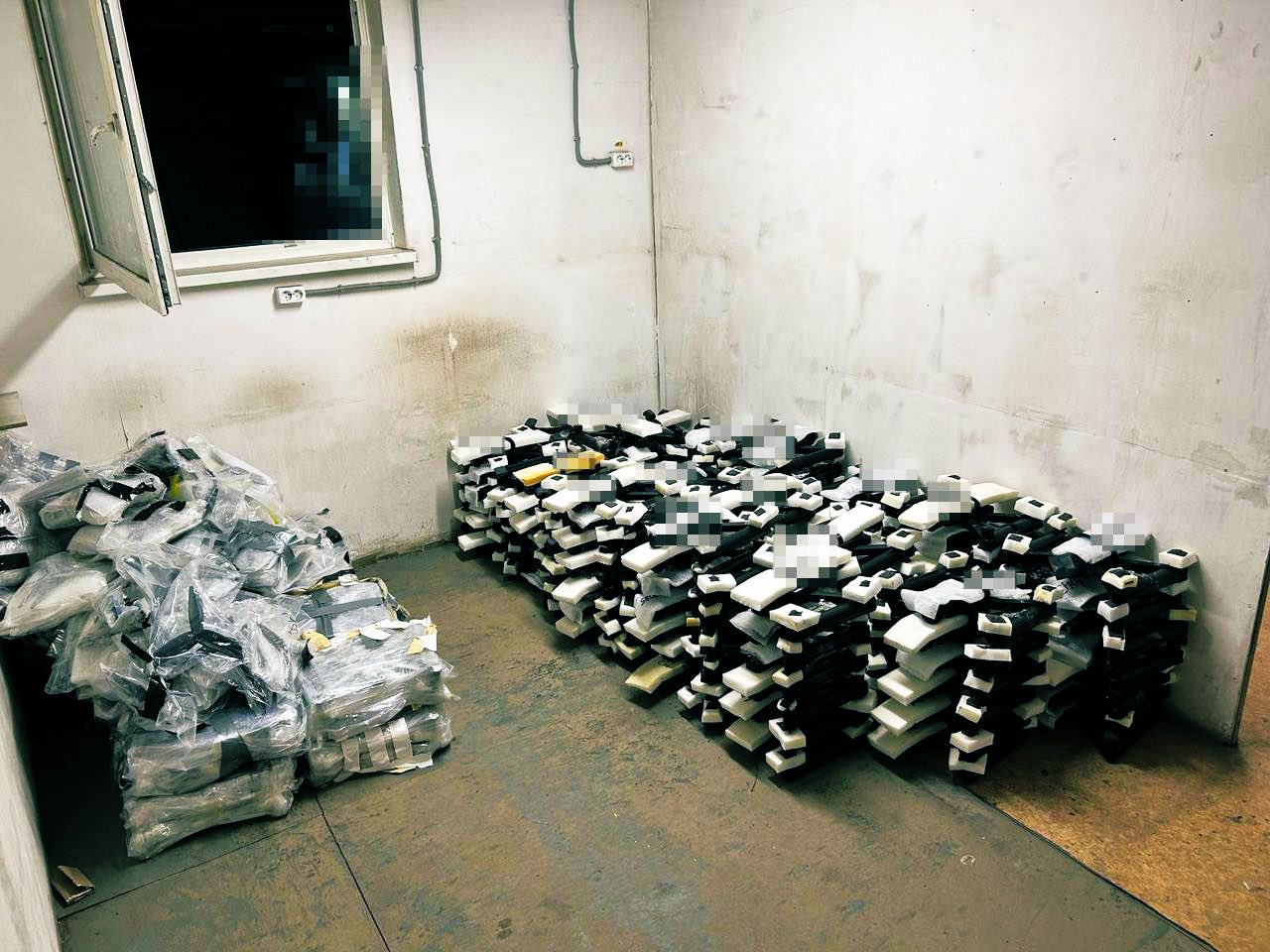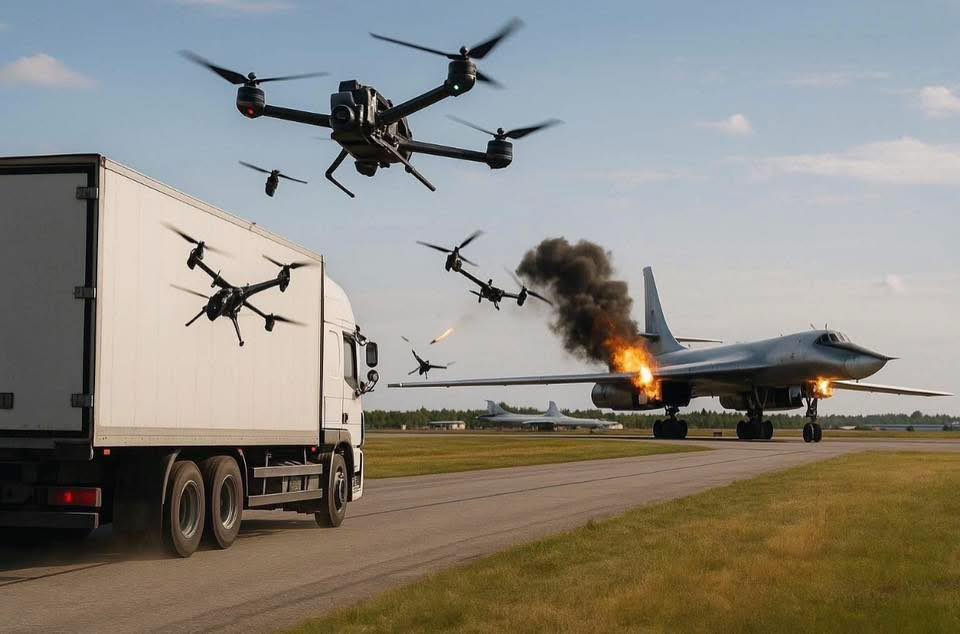On June 1, 2025, Ukraine launched one of the most audacious and secretive military operations of the ongoing war with Russia. The mission, code-named “Spider’s Web,” saw dozens of Ukrainian drones attack multiple Russian airbases deep inside Russia, targeting key aircraft used for launching long-range missiles. The world watched as both sides made bold claims—but what really happened, and how much damage was actually done? Let’s break it down in simple terms.
What Was Operation ‘Spider’s Web’?

Operation Spider’s Web was a carefully planned Ukrainian drone strike on Russian airbases. The goal was to hit Russia’s ability to launch long-range missiles from the sky. According to Ukrainian officials and intelligence sources, the operation took over a year and a half to prepare. The planning was so secret that even the “office” for the operation was reportedly set up right next to an FSB (Russian security service) headquarters in one of Russia’s regions.
Ukraine’s Security Service (SBU) and its operatives smuggled explosive-laden drones into Russia by hiding them inside wooden sheds built on trucks. These sheds were driven near the targeted airbases. When the time came, the roofs of the sheds were opened remotely, and swarms of small drones flew out to attack Russian warplanes.
What Did Ukraine Claim?
Ukraine said it targeted five major airbases, including some as far as 4,300 kilometers from the front lines in Ukraine. The targets included Tu-95 and Tu-22 strategic bombers—big planes that Russia uses to launch cruise missiles—and A-50 radar detection aircraft.
Ukrainian President Volodymyr Zelenskyy called it a “brilliant operation” and claimed that 34% of Russia’s strategic bombers carrying cruise missiles were destroyed, causing an estimated $7 billion in damages. According to Ukrainian sources, 41 Russian aircraft were hit or destroyed.
What Did Russia Say?

Russia confirmed that five of its airbases were attacked: in the Murmansk, Irkutsk, Ivanovo, Ryazan, and Amur regions. The Russian defense ministry said the attacks were “successfully repelled” and that there were no casualties among servicemen or civilians. They also said that some of those involved in the attack were detained.
Russia described the operation as a “terror attack” and admitted that several aircraft “caught fire” but claimed the fires were quickly extinguished. Moscow’s statement suggested that, while there was some damage, it was not as severe as Ukraine claimed.
What Do Independent Sources Say?
Independent verification of the damage is still incomplete. Ukrainian sources have released videos and photos showing large aircraft, including Tu-95 bombers, on fire at the targeted airbases. However, Russia has not allowed independent investigators to visit the sites, making it hard to confirm the full extent of the destruction.
Some analysts believe that, even if the damage was less than Ukraine claims, the attack is still a major symbolic and strategic blow to Russia. It shows that Ukraine can reach deep into Russian territory and target key military assets.
Why Is This Operation Important?

Operation Spider’s Web is important for several reasons:
-
Long-Range Capability: Ukraine proved it could attack targets thousands of kilometers inside Russia, something it had not done before on this scale.
-
Innovation: The use of drones hidden in trucks and wooden sheds is a new and creative way to overcome the limits of drone range.
-
Timing: The attack happened just before a new round of peace talks in Istanbul, putting pressure on Russia at a sensitive moment.
-
Psychological Impact: Even if the physical damage was limited, the attack shows Russia that its airbases are not safe, which could affect how Russia uses its air power in the future.
Operation Spider’s Web is a clear sign that the war is evolving. Both sides are using new technology and tactics to outmaneuver each other. Ukraine’s ability to plan and execute such a complex operation shows its growing skill in modern warfare, especially in using drones.
However, the lack of independent verification means we should be careful about accepting all claims at face value. Russia is likely to downplay the damage, while Ukraine will want to show the biggest possible success. The truth is probably somewhere in the middle.
What Does This Mean for the War?

This operation is unlikely to end the war, but it could change how both sides fight. Russia may now be forced to spend more resources protecting its airbases, while Ukraine gains confidence and international attention for its daring tactics.
For ordinary people, the attack is a reminder that wars are not just fought on the front lines. They can reach deep into a country’s heartland, affecting military strategy and even peace talks.
In Summary
Operation Spider’s Web was a bold and creative Ukrainian drone attack on Russian airbases. Ukraine claims it destroyed or damaged dozens of Russian warplanes and caused billions in damages. Russia says it repelled the attack and suffered only minor damage. Independent confirmation is still needed, but the operation is a clear sign that Ukraine is willing and able to take the fight deep into Russian territory, using new technology and smart planning.
The attack may not have “crippled” Russia’s air bases, but it has certainly shaken Moscow’s confidence and shown the world that Ukraine is not backing down. As the war continues, we can expect more surprises and new tactics from both sides. The only certainty is that the conflict is far from over.
With inputs from agencies
Image Source: Multiple agencies
© Copyright 2025. All Rights Reserved Powered by Vygr Media.

























